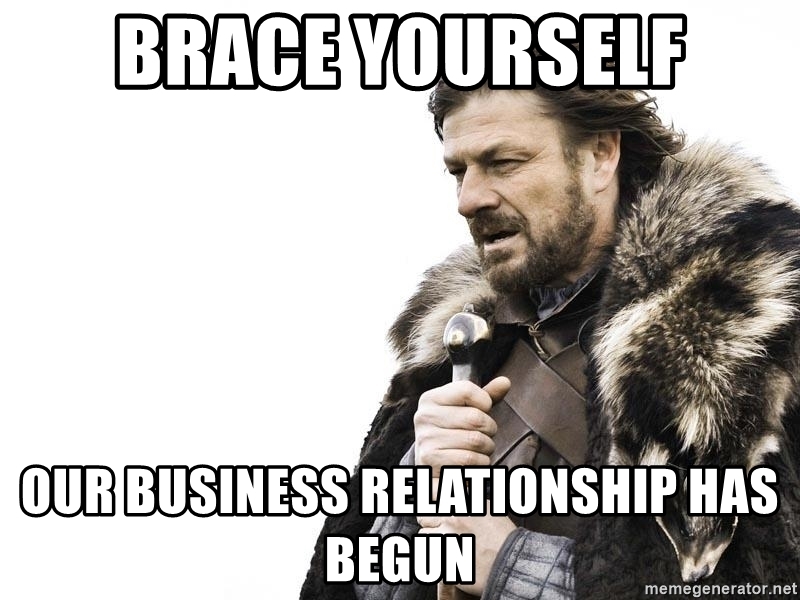The Secret to Landing (and Keeping) New Customers
Finding customers, as well as keeping them, in this day and age is challenging: everyone is barraged with marketing and sales emails in their inbox, telemarketing has gotten out of hand and it’s near impossible to both keep up with and manage the constantly changing landscape of digital marketing and paid ads. No one wants to be sold to. I doubt they ever did. That’s why today’s sales tactics have to be different from the methods of the past – the hard sell, gimmicky offers and impossible-to-keep, misleading promises. Today’s consumers and businesses have to be reached a different way. The secret to reaching them and, more importantly, gaining them as customers lies within the business-to-customer relationship.
CREATING A BUSINESS-TO-CUSTOMER RELATIONSHIP
The first step to creating a lasting business-to-customer relationship is to actually foster it – even if you’re reaching out to a cold contact, never lead with your sales pitch. It’s important to get to know them and what their needs and wants are without trying to sell them anything. If they feel that you’re there to listen and help them solve their problems, they’ll be more likely to be receptive to your ideas and sales pitch later.
It’s a different approach to sales; getting to know your customer first and creating a long-term, business-to-relationship with them rather than focusing on the short-term sale is important. This sales approach is a slower sales process; it requires getting to know your lead and what their needs are, developing a rapport with them and then once they have your trust, pitching them your products and services. While this approach to sales takes more time to develop, the payout is much better and the potential for repeat sales is much greater.
STARTING THE CONVERSATION
When you start a conversation to a new potential customer, you should be focused on listening to their needs and problems and how you can help them. Initially, you may not pitch them the ideal product or service that you have in mind for them; instead, try to help solve their problem quickly so that they can see the value of your relationship.
Your initial conversations with a new lead or potential customer shouldn’t include any kind of pitch or direct ask – no one, unless they have been researching for some time and have already decided on what or who they’ll purchase from is ready on the first point of contact to buy. And, even then, getting a sales pitch on the first call or email with a new customer can seem really pushy and can put off your customer.
Instead, even though you know they’ll be a great fit for your products or services, start the conversation by asking how you can help them or if the have any questions about a product service like the one you offer. Strive to answer questions and help, but not to push your products or services. This opportunity will come later, if you establish a trustworthy business-to-customer relationship now.
The conversation should be able quick wins – how you can solve their issues now. Sometimes, this can be through a lower barrier offer, a free consultation or a free service, however, it can be as simple as answering a question or two over a phone call or email. Let them realize the value in your knowledge and experience and reach out again for further opportunities to help, building trust as you go.
THINKING ABOUT YOUR PITCH
After you’ve developed a business-to-customer-relationship with a potential customer, and you think they’d still be a great fit for your products or services, you’ll want to think about how you’ll give them your sales pitch. It could start with a casual, “You know, you’d be a great fit for our [abc services]” or something like “I’ve been thinking about it and I think you could really benefit from our [xyz program]”. And provide more details about why they are a good fit or how they could benefit from your program. No hard sell, just information.
This shows that you’re still trying to help them even though they may or may not currently have a problem for you to solve or a need for your input. If they value their relationship with you, this should be less of a sales conversation and more of a problem solving exercise. The other thing this kind of approach to your sales pitch will show you is how receptive the customer is to buying into your services or program, without actually asking them to buy. That way, you want be surprised if after a sales pitch and a direct ask that they say no.
Once again, this is a longer game than just reaching out via LinkedIn and including your pitch in a request to connect. Personally, I don’t even bother if I get those kinds of messages. There has to be real value in the relationship for a customer to receive your sales pitch and positively react to it. Once they do, however, that’s when the magic happens.
AFTER THE SALE
Perhaps the most important part of a business-to-customer relationship is how you treat the relationship after a purchase has bee made. In case it’s not clear, the relationship should only change in that now you’re asking them if they are happy with their purchase and what you can do (if anything) to make it better. You’re still going to want to maintain the relationship you had with them before the sale – listening to their needs and wants, helping solve their issues, however, now you’ll need to go a step further and provide excellent customer service with your products and services.

FOSTERING A BUSINESS-TO-CUSTOMER RELATIONSHIP
After you’ve created a business-to-customer relationship, you’re going to need to nurture and maintain it along the way. There a couple ways to do this, however the method is not as important as the concept of fostering the relationship. People are very fickle these days and businesses are looking for any angle they can find to help persuade consumers and businesses to leave their current services and providers to move to something “better”. If your customers are not fully satisfied and you don’t have a strong relationship built with them, then something as simple as price could get them to switch. If a customer is loyal to you, they won’t switch merely because of a lower priced option. However, if they don’t feel valued as a customer, that loyalty could go away along with the customer.
CREATE A NURTURE CAMPAIGN
As I said before, the method of which you use to foster the relationship is not as important as the concept of fostering it. One way to foster a relationship (or it could be used in helping build a relationship too) is a nurture campaign. A nurture campaign is a time-based strategy that marketers use to keep content in front of businesses and consumers to help foster a buying decision. However, these aren’t just used at the lead stage.
You can use a nurture campaign to stay in front of your new customer with product and service news, industry best practices, how-to’s to get the most out of their purchase, add-ons and upsells (though be careful with these) and monthly newsletters. The point is, you should never leave your customer once they’ve made a sale. They may not buy again, or they may not buy again for a while, however, they are still and should be important.
This is also a good time to get a testimonial from your customers – since you have a rapport and a business-to-customer relationship built, and now that they’ve made a sale, they can accurately speak to being a customer and hopefully, provide a positive testimonial about your services.
CREATE A REFERRAL PROGRAM
I get a lot of my new customers based on referrals from past customers and friends how know my work and actively refer me to businesses and nonprofits that they can benefit from my services. If you don’t have a referral program setup, you should. Like yesterday. Referrals are gold. Because referrals are based on trust between two people or businesses already, building a relationship with them and gaining their trust is likely to be faster.
Typically, referrals include an incentive for someone to provide them, however, they don’t have to. For some of the referrals I’ve gotten, they’ve just been word-of-mouth and I haven’t had to provide any incentive at all for them. Ideally, that’s how you’d want them to come – people feel compelled to share how you can benefit someone else that they don’t need an incentive to do so.
In the event that you do need an incentive, here are a few ideas:
- Discounts on future orders or purchases
- Money/cash gift
- Free products/services
- Donation made on the referrer’s behalf
- Upgrade their subscription or status
Whatever you offer, make it something of value, otherwise, it’ll just fall flat. It should seem more like a reward for helping you than you getting the better end of the deal (although, ultimately, it may seem that way).
INVEST IN A CRM
The best thing you can do, if you’re interested in the business-to-customer relationship approach to sales is to invest in a customer relationship manager or a CRM. In many ways, it takes the hard work out of managing your contacts and customers and helps you follow-up at just the right time with them. And, there are some very affordable options out there.
The MailChimp CRM is based around a service you’re probably already using for email marketing but are only using a fraction of the tools that come with it. Its marketing automation alone is reason enough to start using it to help maintain your business-to-customer relationships.
HubSpot also has an affordable CRM option with their free to use HubSpot CRM. Of course, some of the tools in the HubSpot CRM require buying into the Marketing or Sales HUB options, however, the free CRM alone is a powerful tool to help you manager your contacts, email marketing, landing pages, meetings and more.
Our digital marketing program, DPi Campaign Pro, includes both of these options. To learn more about them, visit our website or reach out to us!
SIGNUP FOR OUR EMAIL NEWSLETTER!







